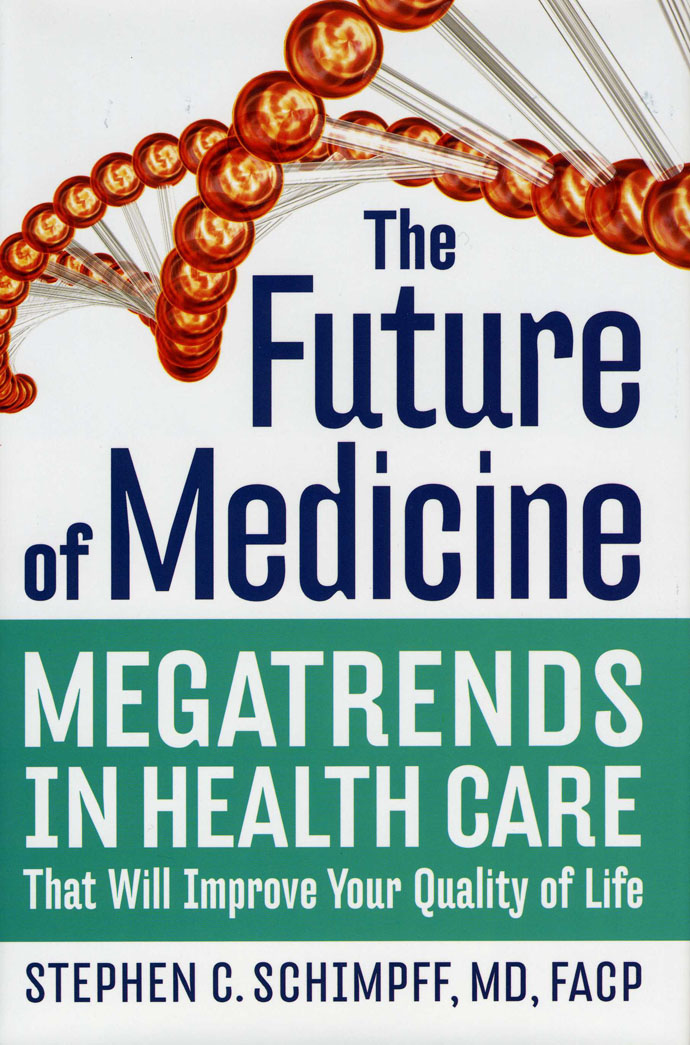Synopsis
You can live a long and healthy life. There is no magic pill or Fountain of Youth, but you can achieve it with simple lifestyle modifications: 1. Eating the right foods 2. Getting the right exercise 3. Reducing and managing stress 4. Improving the quality of sleep 5. Eliminating tobacco 6. Remaining intellectually engaged 7. Staying involved socially. The advice in Longevity Decoded works—because it puts you in charge of shaping your future. Everyone wants to live a long and healthy life—Longevity Decoded is your roadmap. The seven keys cost nothing, except your time and commitment. Dr. Stephen Schimpff provides you with straightforward advice for achieving and maintaining good health over a long life.
Following his seven keys will pay generous returns over the years ahead, and there’s a bonus: You’ll become a role model and inspiration to your children and grandchildren!


Synopsis
BOOM (or “Boost Our Own Metabolism”), uses scientific principles and medical evidence to improve nutrition, exercise, sleep, and stress – and to advance overall health. The guidance provided in this book will help readers to achieve an increase in lean body weight and a decrease in fat weight; to feel stronger, lighter, and more energetic; and to reduce the risk of many chronic illnesses that diminish longevity and quality of life. By following these strategies, readers will be able to slow the aging process and, as a result, to live longer and healthier lives.
All profits generated from BOOM will be donated to the University of Maryland Medical Center to further COVID-19 research.



Fixing The Primary Crisis
Reclaiming the Patient-Doctor Relationship and Returning Healthcare Decisions to You and Your Doctor
Synopsis
Dr. Schimpff calls for restructuring America’s health care system, defining the primary care crisis as a combination of a shortage in the number of primary care physicians (PCPs), the lack of time physicians have available to dedicate to each patient and inadequate reimbursements. Primary care physicians who are in private practice are basically in a non-sustainable business model. They can’t make it work because their overhead costs rise faster than insurance reimbursements increase, so they try to see an ever-increasing daily load of patients to cover their costs. Patients typically receive only about 10 minutes of face-time with their physicians, and patients with time consuming problems are commonly referred to specialists. This leads to unnecessary costs and frustrations as patients go from specialist to specialist, and PCPs are seen as less reliable and credible. According to Dr. Schimpff, “Time, or the lack of it, is the single biggest issue facing PCPs in our health care system. It means quality of care is less than it should be, costs are too high and the opportunity for true healing is remote. It is impossible to deliver high quality care in a 10-15 minute visit when the patient has three to five chronic illnesses, is taking multiple prescription medications, and presents his PCP with a new problem.”

Synopsis



The Future of Medicine
Megatrends in Health Care That Will Improve Your Quality of Life
Synopsis

Fortune Seekers in the Promised Land
A Tale of Exploitation and Development in the Canaan Valley and Blackwater Region of West Virginia
Synopsis
German immigrants discovered Canaan Valley in 1748 proclaiming “Besiehe das Land Kanaan” (“Behold, the land of Canaan”). Having experienced continuing war in their homeland, they were searching for a “new Canaan” and they believed it found. Huge stands of red spruce and hemlock lined the north facing slopes. This was not just another virgin forest. The height and girth of the trees surpassed any others near and far with average trunk diameters of 4 feet and more. It was truly magnificent in its pristine glory. The timber of Canaan Valley was not to be surpassed. An acre of timber would produce up to 100,000 board feet, surpassing by a factor of more than 4 times any area nearby. And under the land lay vast deposits of coal waiting to be extracted.
West Virginia’s Canaan Valley and Blackwater Canyon, being comprised today of state parks, national forests, a wildlife refuge and a national wilderness, are a destination to reconnect with nature. Beautiful but it pales to its virgin state. 100 years ago it became a wasteland destroyed by clear-cut logging and aggressive coal mining. The once “promised land” seemed to hold little promise. Schimpff and Miller detail in words & photographs the region’s origin, discovery by speculators, desecration by developers, and on-going recovery. Today the land continues its struggle to recover. Will today’s fortune seekers learn from the experiences of the past, or are we destined to repeat them in some other manner or form? Only time will tell.



Alignment
The Key to the Success of the University of Maryland Medical System: America’s First Teaching Hospital
Synopsis
The story of how a failing university hospital in Baltimore became a thriving academic medical center and the flagship of a 14-hospital system across Maryland. It demonstrates the absolute importance of establishing alignment between the hospital and affiliated medical school but also with the faculty, the state government which assisted in recapitalizing the facilities, and with business and community leaders and others that assisted with support. Although ostensibly about a single institution, the story is universal for any academic medical center and for that matter any community hospital which should seek alignment with its community physicians and its community at large. It is also relevant to all business leaders since alignment – or its absence – is so often the critical ingredient in managerial success or failure.

